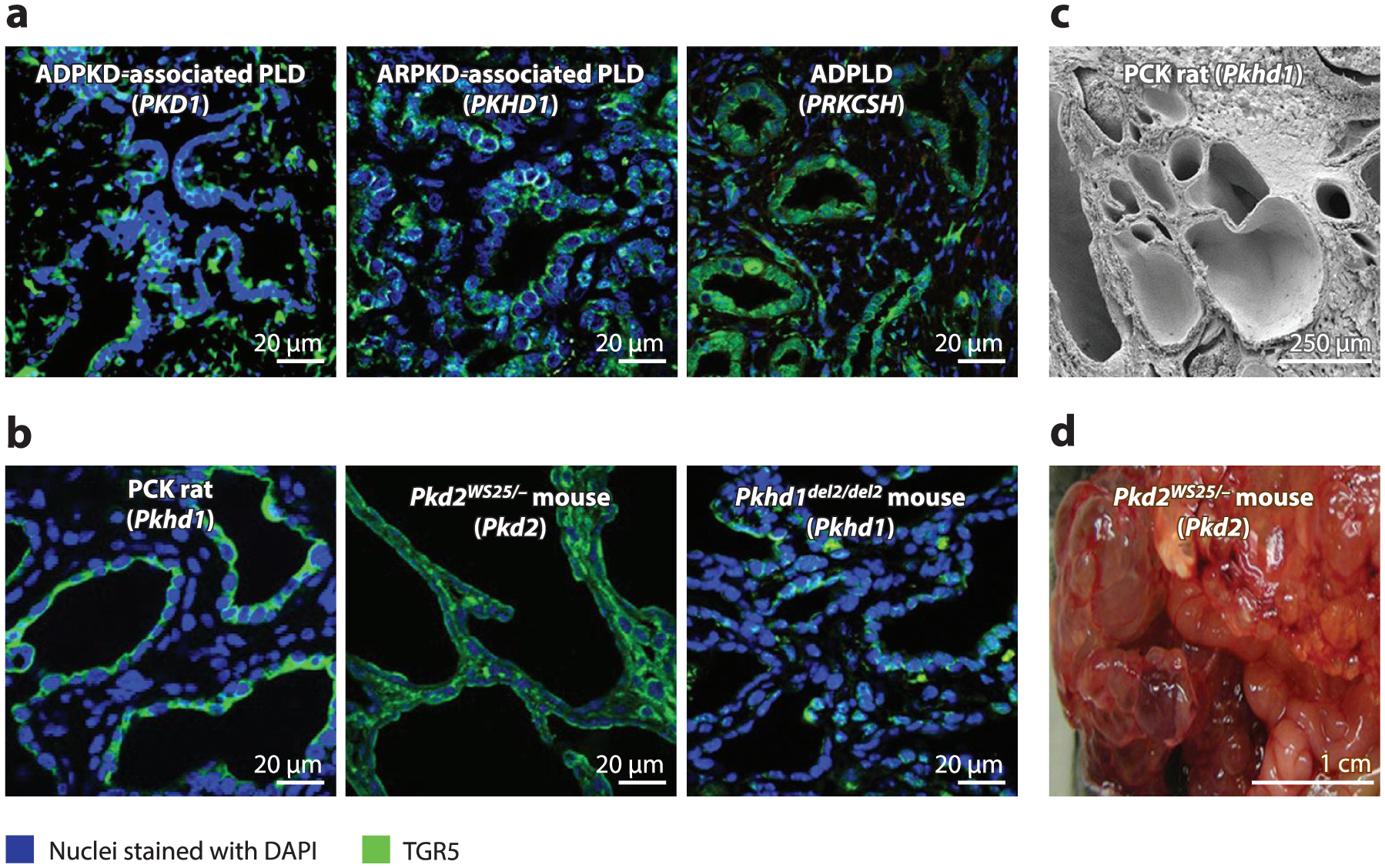Figure 1.

Hepatic cystogenesis in (a) patients and (b-d) animal models with different forms of PLD. Disease-causative genes are shown in parentheses. Despite genetic heterogeneity, mutations in PLD-causative genes result in similar end points—multiple hepatic cysts of different sizes and shapes. (a,b) Immunofluorescence confocal microscopy. (c) Scanning electron microscopy. (d) Gross appearance. Abbreviations: ADPKD, autosomal dominant polycystic kidney disease; ADPLD, autosomal dominant polycystic liver disease; ARPKD, autosomal recessive polycystic kidney disease; PLD, polycystic liver disease; TGR5, Takeda G protein-coupled receptor 5. Panel c adapted from Reference 45 with permission from Elsevier.
